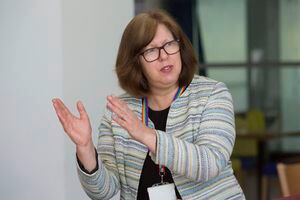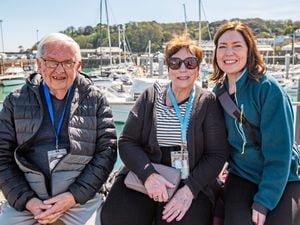‘Vital’ contact tracers are ready to go again
GUERNSEY’S team of coronavirus contact tracers are on stand-by and will start work again to track down possible Covid-19 carriers within one hour of a positive test.

The team has been credited with playing a vital role in suppressing transmission of the virus, which led to the island becoming the first place in the British Isles to announce it was clear of active cases.
Even before the island had its first positive case in March, 35 contact tracers had been trained.
Contacts of known cases have accounted for more than a quarter of Guernsey’s 252 positive results.
As the island moves to phase four of the exit from lockdown strategy tomorrow, health officials are confident that they are very well prepared for any new cases.
All of the health parameters are showing no evidence of Covid-19 activity in the island, but the Director of Public Health, Dr Nicola Brink, is certainly not resting on any laurels.
‘We are likely to see cases reappearing in the community and we mustn’t be discouraged by that because we’ve got a very sophisticated track and trace programme, and we’ve got the ability soon to move to 400 or so tests a day on-island.
‘The significance of the on-island testing is the rapidity of our response, so for example if we had a positive result at 7pm tonight, the contact tracers are on-call and they’d be in contact tracing by 8pm.
‘That’s how we’ve been so successful with our track and trace programme, and the other thing that’s important is that we go back 24 hours before someone is symptomatic.’
One big challenge ahead for health officials will be deciding when and how to open borders, including how long to stick with the 14-day self-isolation requirement.
Dr Brink said they were interested in the idea of ‘air bridges’ with countries that have a similarly low Covid-19 infection rate, but for now the focus was to take stock during phase four.
‘I think we need to take one step at a time, the borders and the quarantine issue are really in phase six, and we don’t know how quickly we will progress to phase six.
‘I think what’s going to be of interest is that the UK are closing their borders and they’re also changing to a community track and trace programme, so it will be very interesting to see what the impact is on their levels of community transmission.
‘We’re already looking ahead to phase six to think about what that will look like, we will need to know what the prevalence of the infection is in our surrounding communities.’
Non-essential travel in and out is permitted as part of phase four, but the 14-day quarantine period will be here ‘for as long as required’ and extra staff have been redeployed to do spot checks to make sure travellers are sticking to the rules.





